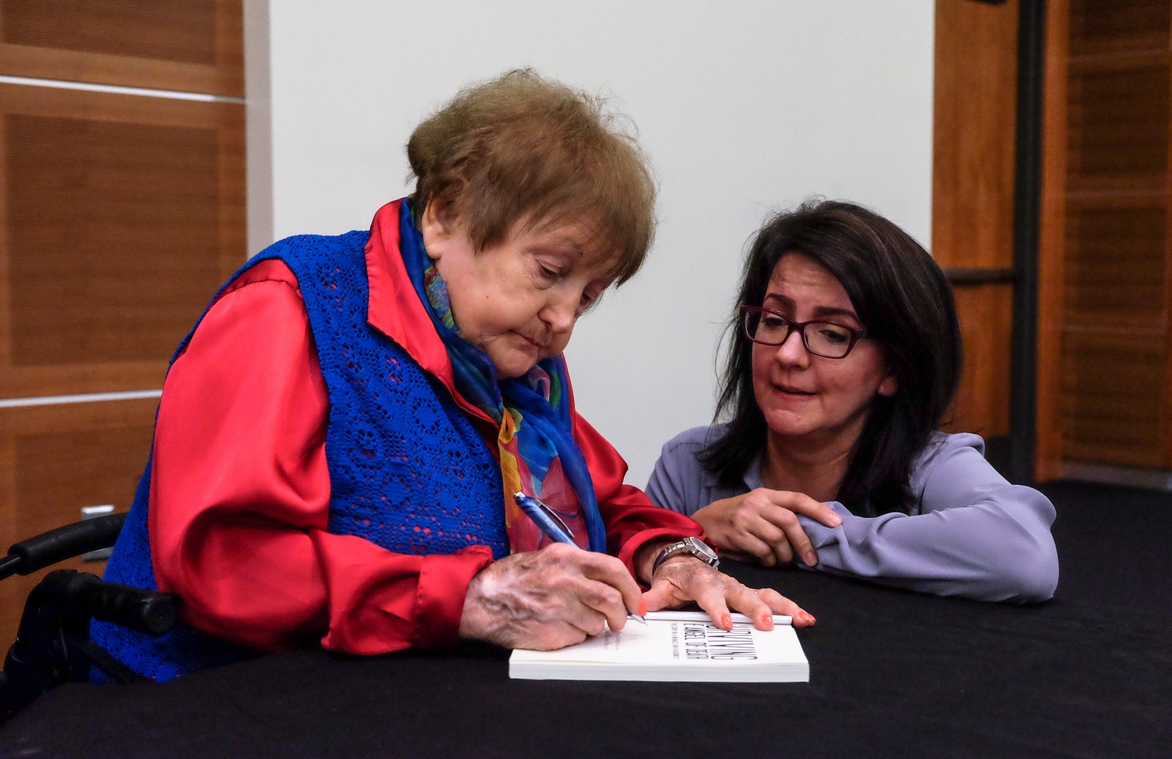Eva Kor, the subject of a new documentary about her survival of the Holocaust, told students at Middle Tennessee State University recently that in an environment of hate speech, colleges could be the place to air ideas and “teach extremists.”
Kor’s comments about free speech came after a talk with students about her experience as a young girl in a Nazi prison camp. Kor underwent dangerous medical experiments with her twin sister under the direction of Dr. Josef Mengele.
“As long as there’s no violence and no call for violence, I think that colleges are maybe the appropriate place to air ideas and maybe even teach the extremists something,” Kor said, in answer to a question about the balance between hate speech and free speech.
“I think that yelling fire in a theater is not permitted so there are already certain guidelines,” said the 84-year-old Kor.
Both sides may not like the speech of the other side, but “that is what democracy is all about,” Kor concluded. “It’s a complicated organization to live in.”
Kor’s remarks about hate speech also came just a few days after a mass shooting at a synagogue in Pittsburgh that killed 11 people. Federal officials have charged the gunman with federal hate crimes resulting in death.
Campus speech is a tricky First Amendment issue, and many colleges have campus speech codes, even though courts have said such codes can violate the First Amendment.
In talking about the guidelines already laid out for free speech, Kor was referring to the clear and present danger test by Oliver Wendell Holmes Jr. which states that speech that creates a clear and present danger is not protected by the Constitution.
Kor described to students how even after she moved to the United States, she encountered anti-Semitism. Throughout Kor’s life, she has countered hate speech directed at her by telling her story.
In Terre Haute, Indiana, she was terrorized by the local schoolchildren for 11 years because she was different, she said.
The children painted swastikas on her house and threw bricks at her roof. Even her son was ashamed of her, she said.
“They made my life a pure hell on earth,” she said.
She believed she knew that if she could tell the children her story, they would leave her alone.
Then, in 1978, NBC aired a miniseries called “Holocaust,” starring Meryl Streep, which students were assigned to watch and report on for a class project.
After the miniseries, Kor appeared on the local news to share her Holocaust experience as a child. It was this appearance that changed how the students saw her, Kor said.
She was invited to talk to children in classrooms, and she has never stopped.
One of the life lessons she shares is the importance of fighting prejudice and anti-Semitism.
“Prejudice is equal to hatred,” she said. “It gives people an excuse to hate.”
She called anti-Semitism the oldest prejudice and hatred in the world.
The Supreme Court has struck down laws that have restricted offensive, hateful speech such as anti-Semitic speech, including in the landmark case, Village of Skokie v. National Socialist Party of America (Ill) (1978).
In that case, the National Socialist Party of America (NSPA) requested permission to hold a demonstration in Skokie, Illinois. The majority of the population of Skokie was Jewish, and many were Holocaust survivors. The town tried to stop the demonstration, but the Illinois Supreme Court ruled that the NSPA had a First Amendment right to demonstrate.
Ashley Perham is a student web content editor for The First Amendment Encyclopedia at Middle Tennessee State University.

